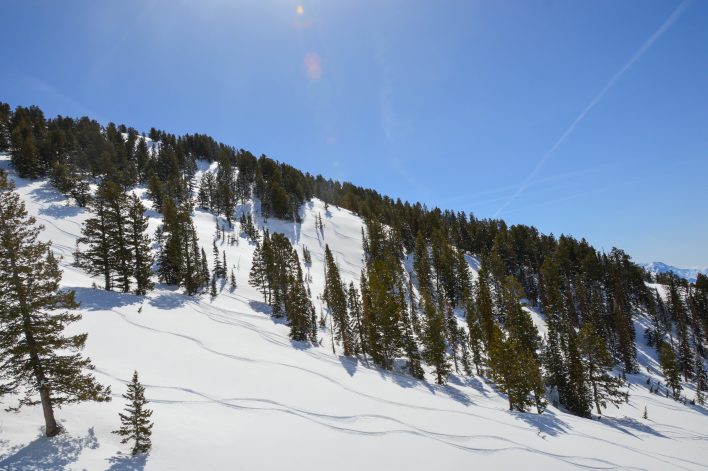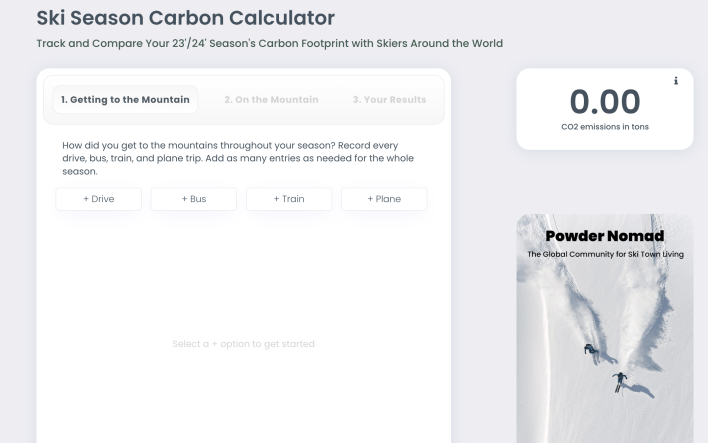Have you ever wondered the CO2 impact of a ski trip? Now there’s a way to find out.

Unless you’re touring daily out of your back door, chances are your average backcountry ski day has a carbon footprint. Add in a plane ride to explore new mountains, a tram lift to access untracked sidecountry or a snowcat for a bump further into the alpine and all of a sudden we’re talking in the tons of CO2 emissions.
After spending this season in Chamonix, France, and the winter before that in Nelson, B.C., Ryan Nisbet was all too familiar with the amount of travel it takes to get to great ski destinations. He wondered what the impact of his powder chasing was.
So, he started digging.
Using research from government agencies, institutes and different universities, Nisbet found data on the impact of activities like riding a ski lift or taking a bus. Curiosity from friends and family led him to put together a calculator to make it easier for people to figure out their personal impact for themselves. The trick was keeping it simple.
“It’s difficult to answer the question: What airplane were you on?” Nisbet says, “So I use different averages to just give people a general idea of their direction.”
He also recognizes that while you might be using a plane for a ski trip, the impact of that flight is shared between the passengers. “If you were on a bus, it’s not like you are responsible for the entire emissions of the bus ride. It’s divided,” Nisbet explains. “For planes, it’s interesting because, say you’re in business class, you’re taking up a bit more space, so [emissions are] divided differently based on if you’re in business class, first class or economy.”

Once you’ve entered all the required information—mode(s) of transport to the mountains and mode(s) of transport in the mountains—two numbers are calculated. The first is the tons of CO2 you emitted. The second is, by percentage, how you compare to the average user.
“It’s never a perfect calculation,” Nisbet admits. But it’s a good place to start to giver skiers and riders more information about their impact.
His hope in offering these calculations is not to discourage people from traveling. “We should enjoy the places that we want to preserve,” he says. Instead, he hopes his calculator will motivate people to become more active in protecting the environments they recreate in. “At the end of the carbon calculator, it refers the user to a number of different resources,” he explains.
There’s a link to Protect Our Winters, an organization Nisbet appreciates for its advocacy in government and for its focus on larger systemic change through policy. He also includes a link to Patagonia Action Works, which uses location input to share local conservation efforts.
At the end of the day, it’s another resource for skiers and riders—not so different from other sites we frequent to help us make decisions, like Google Earth, CalTopo or the avalanche forecast for example—however you choose to use it.
For Nisbet, it’s just the first resource he plans to create. The calculator is housed on his Powder Nomad website, which offers his second project: Ski Nomad, a platform where snow-motivated travelers can connect to a larger network of like-minded people, with the goal of lowering the barriers of access to local beta in mountain towns.
To learn your ski travel emissions, visit the Ski Season Carbon Calculator. If you would like to know your total carbon footprint, check out The Nature Conservancy. For more stories from the untracked experience, subscribe.










Related posts: